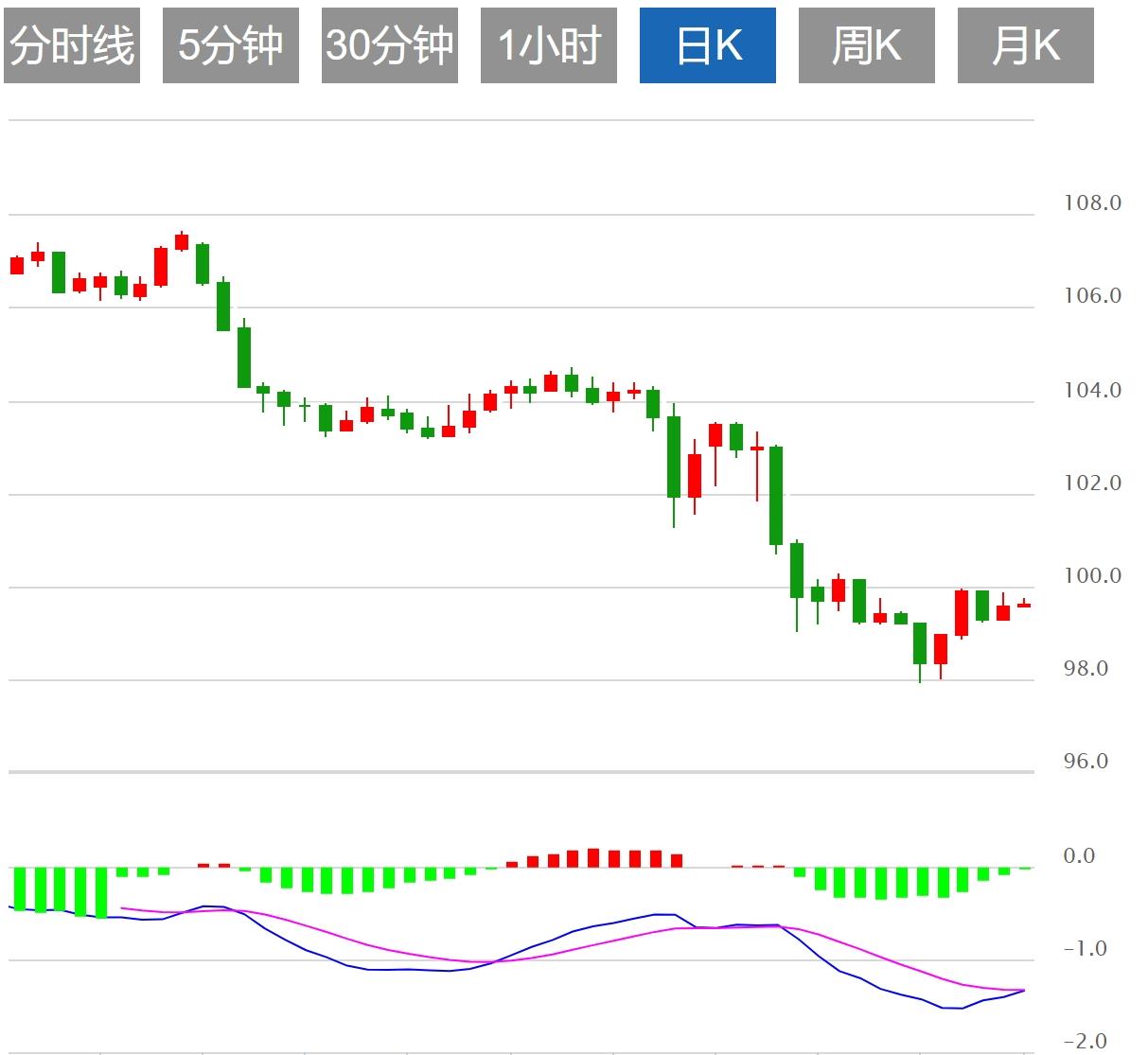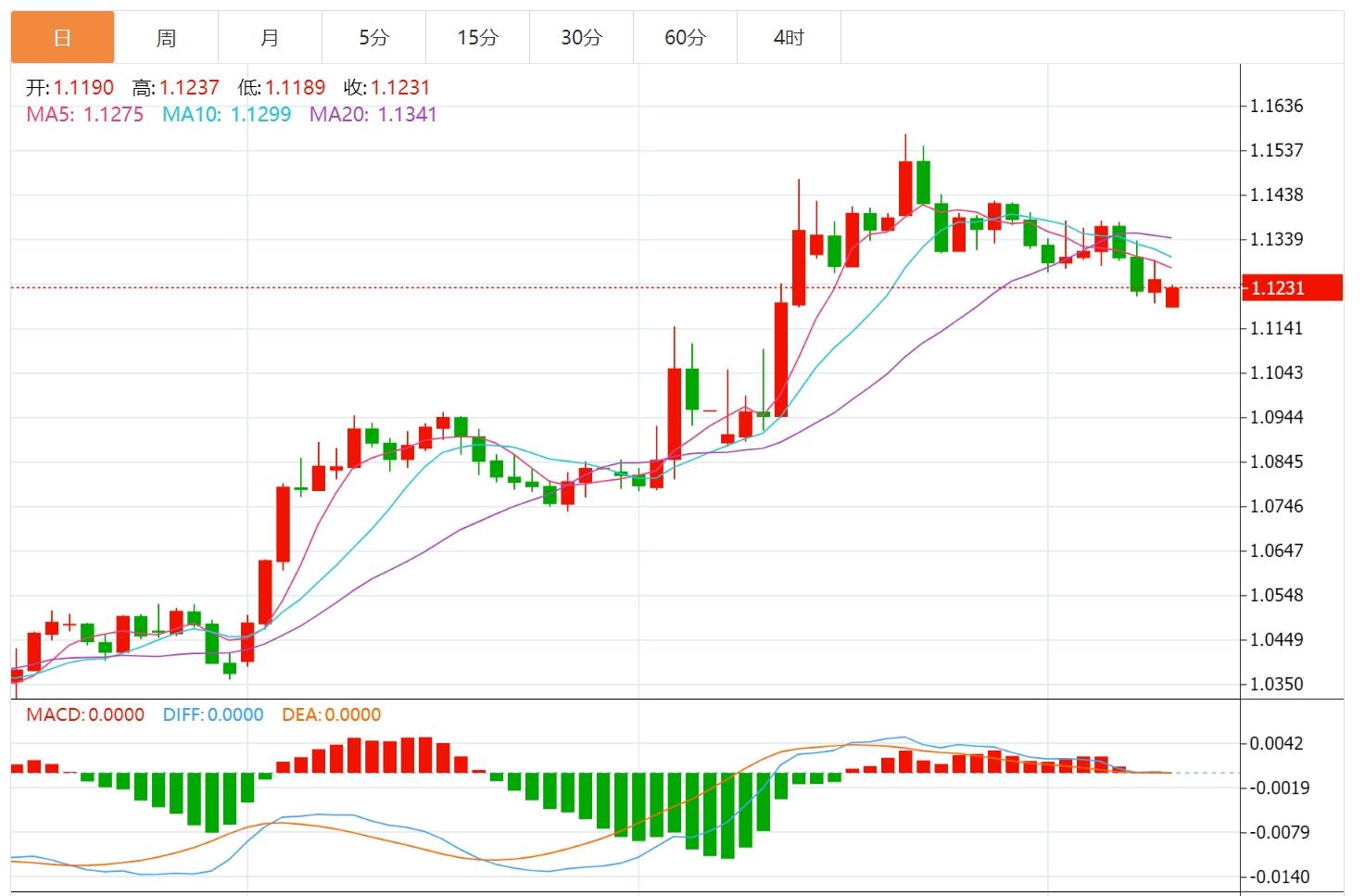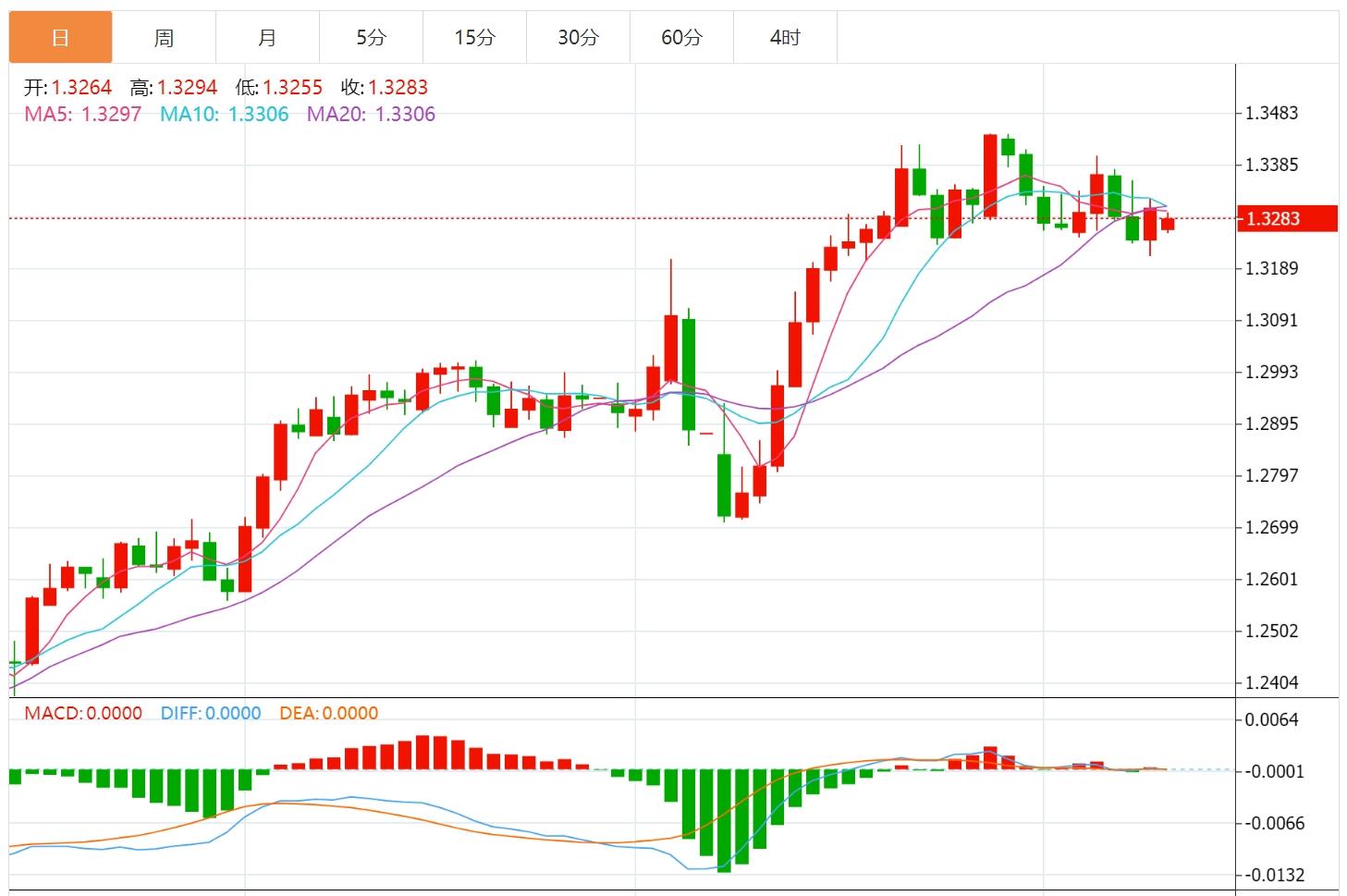Wonderful Introduction:
Youth is the nectar made of the blood of will and the sweat of hard work - the fragrance over time; youth is the rainbow woven with endless hope and immortal yearning - gorgeous and brilliant; youth is a wall built with eternal persistence and tenacity - as solid as a soup.
Hello everyone, today XM Foreign Exchange will bring you "[XM Group]: The mystery behind the continuous rise in the US dollar? This week we are facing the test of US CPI." Hope it will be helpful to you! The original content is as follows:
On the Asian session on Monday, the US dollar index hovered above the 100 mark, and this week's economic calendar includes a number of important data releases. Japan's current account balance will be released on Monday; on Tuesday, it will pay attention to the summary of the Bank of Japan's May meeting opinions, UK employment data, Germany's May ZEW index and US April CPI inflation data; on Wednesday, Sweden's April CPI inflation rate and Canada's March building permit data; on Thursday, Australia's April employment data, UK GDP and manufacturing data, Norway and euro zone quarterly GDP data, U.S. initial unemployment claims, Philadelphia Fed Business Index, PPI index, retail sales and industrial production data, and Canadian manufacturing sales data; on Friday, Japan's first-quarter GDP data and the University of Michigan's preliminary consumer confidence index in May.
U.S. dollar: As of press time, the US dollar index hovered around 100.58. The US dollar performed strongly last week, and the US dollar index recorded a weekly increase, mainly due to the conclusion of the US-U.K. trade agreement and the market's optimistic expectations for the Sino-US Geneva talks. At the beginning of the week, the US dollar rose steadily against major currencies, especially against the Japanese yen and Swiss francs. However, the dollar saw a slight correction on Friday, down 0.01% against the Swiss franc to 0.83150 and 0.39% against the yen to 145.355. Technically, the middle rail of the Bollinger band 99.5934 and the upper rail of the Bollinger band form a short-term suppression. Although the MACD bar chart is still in the negative range (-0.5695), the fast and slow lines converge clearly, indicating that the long and short games are intensified.



U.S. Secretary of Commerce Lutnik said on Sunday that we believe that 10% of the global benchmark tariff may be retained in the foreseeable future, but he insisted that the cost will be borne by countries and businesses rather than (US) consumers. He also said: "The responsibility of enterprises is to strive to sell products to American consumers, and domestically produced products do not need to pay the tariff, so foreign companies will eventually have to participate in the competition. "But many consumer companies have made it clear that as tariffs continue to have an impact, they may increase product prices.
U.S. California Governor Gavin Newsom recently criticized the US federal government in a video posted on social media. He said that the current tariff policy of the US government "may cause the United States to lose its status as the world's largest economy." In the video, he criticized the US government's tariff policy for blocking US imports and directly affecting the daily lives of ordinary people. "In a few months, people will lack school bags and Christmas toys. Tariffs will make American households worse. Newsom said that as the strongest state in the United States, California occupies an important position in the global economy, precisely because California is committed to "reducing trade barriers and providing quality services to American consumers", but current tariff policies are hurting all of this, resulting in price increases and ports stagnation.
The British steel industry urged the government to clarify when the U.S. will cancel tariffs. Previously, the United States and the United Kingdom reached a landmark agreement to cancel tariffs imposed by Trump on the industry. The United Kingdom welcomed the trade agreement, saying that the agreement would reduce steel tariffs from 25% to 0%, so British producers can continue to export products to the United States. However, details released late Thursday showed that both sides also had to formally determine the safety requirements and quotas that the steel industry must comply with, which made industry representatives unclear when the tariffs will be cancelled. “This is certainly not a formality; I mean, so far, there is obviously a lot of things in the agreement that are not completely determined and defined,” said Chrysa Glystra, head of trade and economic policy at the industry group UK Steel. Glystra added that companies don’t know that they have to meet supply chain conditions to take advantage of the tariffs. “We really don’t know when this will take effect, nor what the specific timetable is. ”
According to CCTV, China and the United States held high-level economic and trade talks in Geneva, Switzerland from May 10 to 11. The Chinese delegation stated at a press conference that the two sides had in-depth exchanges on economic and trade issues of concern to each other. The atmosphere of the talks was frank, in-depth, constructive, substantial progress was made, and important consensus was reached. The two sides agreed to establish a Sino-US economic and trade consultation mechanism, clarify the leaders of both sides, and conduct further consultations on economic and trade issues of their respective concerns. China and the United States will finalize the relevant details as soon as possible, and will issue a joint statement reached on May 12. The report also said that from May 10 to 11 local time, the Chinese leader of China-US economic and trade, Vice Premier of the State Council, He Lifeng, the leader of the US economy and trade, the US leader, US Treasury Secretary Becent and Trade Representative Greer in Geneva, Switzerland.Hold high-level economic and trade talks between China and the United States. The two sides conducted candid, in-depth and constructive communication on the implementation of the important consensus reached by the Chinese and US dollar heads on January 17, reached a series of important consensuses, and made substantial progress in the talks.
After many central bank interest rate decisions were released last week, the focus of market attention this week will turn to economic data and details of the talks between the United States and its major trading partners. During his visit to Saudi Arabia, Qatar and the UAE from May 13 to 16, US President Trump is also expected to make a series of remarks. The U.S. will release April CPI data on Tuesday, which will affect Fed's interest rate expectations. This was followed by PPI, retail sales, weekly unemployment claims, Philadelphia Fed Index, industrial production, home starts, and the University of Michigan consumer confidence and inflation expectations on Friday. San Francisco Fed President Daly will make a speech.
The eurozone will release EU economic forecasts, second valuation of GDP in the first quarter and employment, industrial production and trade. Germany will announce the ZEW economic prosperity index and the final value of the April inflation rate. The UK's busy schedule begins with employment data on Tuesday, followed by a number of monthly data released on Thursday, including GDP, construction output, industrial production, trade, manufacturing output and corporate investment. Bank of England President Andrew Bailey will give a speech in Amsterdam, and the Bank of England will have 12 speeches this week. Japan will release current account and trade data, PPI and first-quarter GDP. The Bank of Japan will release a summary of opinions for the meeting from April 30 to May 1, and deliberation committee member Nakamura Shiaki will deliver a speech. Australia will release employment data for April, salary price index for the first quarter, and consumer and business confidence surveys. New Zealand has no important data, but the Fed will release one-year and two-year inflation expectations. There is no important data in Canada.
Bank of America's foreign exchange and interest rate confidence survey in May showed that international investors are reducing their dollar exposure due to various concerns, including concerns about the U.S. fiscal outlook. Bank of America said selling the dollar has become "the most convincing deal since 2025" and surpasses the persuasiveness of buying government bonds. Bank of America strategists said in a report that the euro may be the biggest beneficiary of the decline in demand for the dollar.
RBC predicts that the euro's momentum has stalled at present, but it should rebound when the Fed starts cutting interest rates later this year, rising to 1.17 by the end of 2025 and 1.24 by the end of 2026. The euro has been falling since it hits a more than three-year high of 1.1574 on April 21. The enthusiasm for selling the dollar has waned as trade tensions eased. However, a U.S. rate cut should be beneficial to the euro, and the euro's share of global foreign exchange reserves is likely to increase in the coming years.
The above content is all about "【XM Group】: The mystery behind the continuous rise in the US dollar? This week, it is carefully compiled and edited by the XM Forex editor. I hope it will be helpful to your trading! Thanks for the support!
After doing something, there will always be experience and lessons. In order to facilitate future work, we must analyze, study, summarize and concentrate the experience and lessons of previous work, and raise it to the theoretical level to understand it.